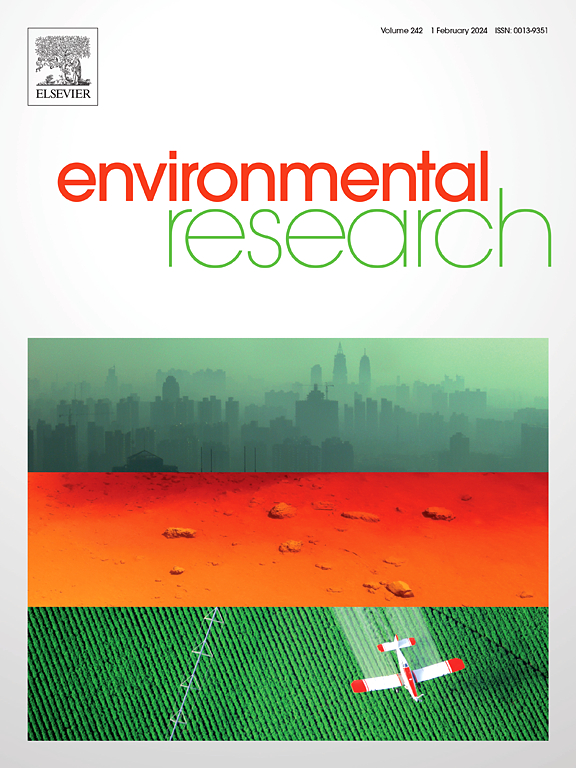Natural sunlight-driven photocatalytic degradation of polypropylene microplastics over ZnO nanorods
IF 7.7
2区 环境科学与生态学
Q1 ENVIRONMENTAL SCIENCES
引用次数: 0
Abstract
Microplastic pollution has emerged as a major global issue, with over 5 trillion plastic particles contaminating oceans and seas, posing significant risks to both ecosystems and human health. Recent studies have highlighted advanced oxidation processes as a promising technology to tackle this issue. Among these, heterogeneous photocatalysis has been identified as a particularly effective process. In this study, we fabricated ZnO-based photocatalysts, hydrothermally coated onto a glass fiber meshes with a thickness of approximately 16 μm. The ZnO nanorods exhibited an average length (l) of ∼3.2 μm and an average diameter (d) of ∼94 nm, resulting in a high length-to-diameter (l/d) ratio of 34 to enhance photocatalytic efficiency. The photocatalytic degradation of low-density polypropylene MPs (300 μm, 905 kg/m3) was tested using a 100 mL batch photoreactor in which 27 particles (∼26 mg) were suspended under natural solar irradiation for a total of 196 h. The oxidation of microplastics was quantified by monitoring the carbonyl index (CI) over a period of 16 days. The results showed a remarkable increase in the CI reaching a value of 57, approximately five times higher than that observed in the natural degradation process without the presence of a photocatalyst, and higher than in almost all recent studies.
在ZnO纳米棒上自然光催化降解聚丙烯微塑料。
微塑料污染已成为一个重大的全球性问题,超过5万亿个塑料颗粒污染着海洋,对生态系统和人类健康构成重大风险。最近的研究强调,先进的氧化工艺是解决这一问题的一种有前途的技术。其中,多相光催化已被确定为一个特别有效的过程。在这项研究中,我们制备了zno基光催化剂,并将其水热涂覆在厚度约为16 μm的玻璃纤维网格上。ZnO纳米棒的平均长度(l)为~ 3.2 μm,平均直径(d)为~ 94 nm,长径比(l/d)高达34,从而提高了光催化效率。采用100 mL间歇光反应器对低密度聚丙烯MPs (300 μm, 905 kg/m3)进行光催化降解试验,其中27个颗粒(~ 26 mg)在自然太阳照射下悬浮196小时。在16天的时间里,通过监测羰基指数(CI)来量化微塑料的氧化。结果显示,CI显著增加,达到57的值,大约是在没有光催化剂存在的自然降解过程中观察到的5倍,并且高于几乎所有最近的研究。
本文章由计算机程序翻译,如有差异,请以英文原文为准。
求助全文
约1分钟内获得全文
求助全文
来源期刊

Environmental Research
环境科学-公共卫生、环境卫生与职业卫生
CiteScore
12.60
自引率
8.40%
发文量
2480
审稿时长
4.7 months
期刊介绍:
The Environmental Research journal presents a broad range of interdisciplinary research, focused on addressing worldwide environmental concerns and featuring innovative findings. Our publication strives to explore relevant anthropogenic issues across various environmental sectors, showcasing practical applications in real-life settings.
 求助内容:
求助内容: 应助结果提醒方式:
应助结果提醒方式:


